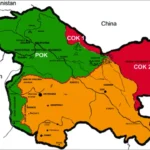Time travel has long captivated human imagination, from the pages of science fiction novels to blockbuster movies. But beyond entertainment, is time travel truly possible? Can we one day move backward or forward through time like we do through space? Recent scientific advancements and theoretical breakthroughs have reignited this age-old question, bringing us closer to understanding the nature of time itself.
The Concept of Time Travel
Fundamentally, time travel involves traveling to different moments in time, whether backward to the past or forward to the future. While forward time travel seems intuitive—after all, time always moves forward—traveling backward raises paradoxes and challenges our fundamental understanding of physics.
Time Travel in Physics: What Does Science Say?
The theory of relativity, formulated by Albert Einstein, is the cornerstone of modern physics’ take on time travel. Relativity teaches us that time is not fixed but varies depending on factors like velocity and gravitational forces. This phenomenon, known as time dilation, means that time moves slower for objects moving at high speeds or near massive gravitational fields.
This has been experimentally confirmed: astronauts aboard the International Space Station age just a tiny bit slower than people on Earth due to their high velocity and weaker gravity—effectively, they experience a form of forward time travel, albeit on a very small scale.
Theoretical Possibilities: Wormholes and Closed Timelike Curves
A captivating scientific concept for traveling backward in time centers on wormholes—imagined bridges linking separate locations within spacetime. If such structures exist and could be stabilized, they might allow passage between different times and places, effectively creating a shortcut through time.
Another concept is that of closed timelike curves (CTCs), mathematical solutions to Einstein’s field equations in general relativity that theoretically permit time loops. Recent studies by physicists Germain Tobar and Fabio Costa suggest that paradox-free time travel through CTCs might be mathematically feasible, resolving long-standing paradoxes like the famous “grandfather paradox,” where a time traveler could prevent their own existence.
Breakthroughs in Time Manipulation Experiments
Recent experimental advances have pushed the boundaries of our understanding:
- Time Mirrors: Scientists have developed “time mirrors,” metamaterials capable of reversing electromagnetic waves, effectively making signals travel backward in time within controlled environments.This advancement has the potential to transform computing and data transfer by allowing information to flow in reverse.
- Quantum Simulations: Researchers at Cambridge University have simulated backward time travel in quantum systems by manipulating entangled particles. Although this doesn’t constitute real time travel, it offers insights into quantum behavior in time-reversed scenarios.
- Time Reversibility in Materials: Studies have shown certain materials exhibit microscopic time reversibility, meaning their atomic structures can rearrange over time in a reversible manner, hinting that time’s arrow might not be as one-directional as once thought.
Challenges and Paradoxes
Despite exciting developments, significant challenges remain. Backward time travel raises logical paradoxes and questions about causality—can events in the past be altered without collapsing the timeline? Many physicists argue that the universe may have built-in safeguards preventing paradoxes, or that alternate timelines might exist to resolve contradictions.
Moreover, practical obstacles abound. Concepts like wormholes require exotic matter with negative energy density to remain stable—something not yet observed. The amount of energy needed and the technological hurdles involved are still far beyond what we can currently achieve.
The Road Ahead: From Science Fiction to Science Fact?
While practical time travel remains speculative, the scientific community continues to make strides in understanding time’s fundamental nature. The synergy of quantum physics, cosmology, and relativity opens pathways for breakthroughs that may one day allow controlled manipulation of time.
Astronomical observations, like detailed studies of the Cosmic Microwave Background—the universe’s earliest light—offer glimpses into time’s infancy, helping refine our models of spacetime.
Conclusion
Is time travel possible? At present, it remains a tantalizing mix of science, theory, and imagination. Forward time travel, through relativistic effects, is a proven phenomenon, albeit limited in scope. Backward time travel, while theoretically plausible in certain models, faces significant conceptual and technological hurdles.
Nevertheless, ongoing research into quantum mechanics, spacetime geometry, and advanced materials keeps the door open. What was once pure fiction may, in the future, become a scientific reality—transforming not only our understanding of the universe but also how we experience time itself.





